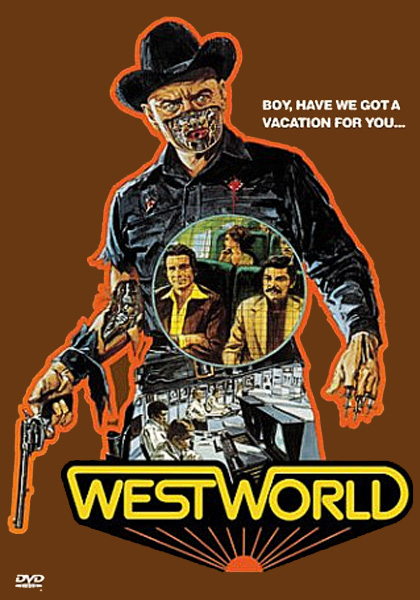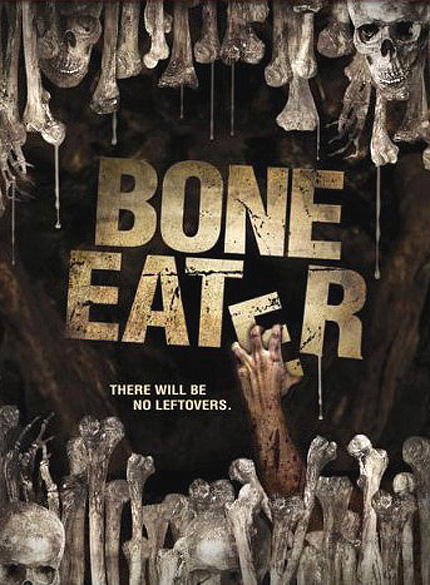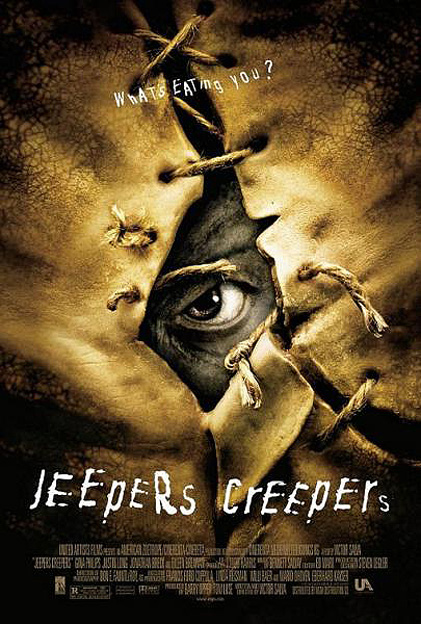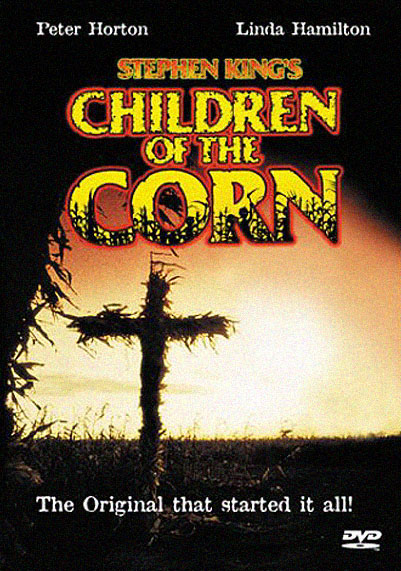mark mclaughlin
FOUR-LETTER WORD BEGINNING WITH `F'

Mark McLaughlin's fiction, nonfiction and poetry have appeared in hundreds of magazines, newspapers, websites, and anthologies, including Galaxy, Black Gate, Cemetery Dance, Midnight Premiere, Dark Arts, In Laymon's Terms, and two volumes each of The Best of the Rest, The Best of HorrorFind, and The Year's Best Horror Stories (DAW Books).
McLaughlin's latest book is the story collection, Raising Demons For Fun and Profit, published by Sam's Dot Publishing and available at www.GenreMall.com (look in the Anthologies section). Other collections of his fiction include Motivational Shrieker, Slime After Slime, and Pickman's Motel from Delirium Books; At the Foothills of Frenzy (with co-authors Shane Ryan Staley and Brian Knight) from Solitude Publications; and Twisted Tales For Sick Puppies from Skullvines Press. GravesideTales.com is the home of his blog, Time Machine of Terror!
With collaborator Michael McCarty, he has written Monster Behind the Wheel (Delirium Books/Corrosion Press), Attack of the Two-Headed Poetry Monster (Skullvines Press), All Things Dark and Hideous (Rainfall Books, England), and Professor LaGungo's Delirious Download of Digital Deviltry and Doom (Darkside Digital). Also, he is the co-author, with Rain Graves and David Niall Wilson, of The Gossamer Eye, which won a Bram Stoker Award for Superior Achievement in Poetry.
To find out more about McLaughlin's work, visit www.myspace.com/monsterbook, www.skullvines.com, and www.Horror-Mall.com (enter McLaughlin into the Mall's search engine).
SeeGeeEye-ophobia:
Fear of Extremely Bad Special Effects
Welcome once again, my friend, to my online chamber of horrors, where we discuss how various forms of fear are manifested in the cinema of the macabre. Pull up a headstone and sit down... But I should warn you: since we're online, those headstones are digital and therefore, a bit flimsy. Digital and flimsy -- just like the special effects in so many movies today!

You know, there was a time when doctors would purge the stomachs of patients who'd ingested poison by making them swallow a noxious substance called syrup of ipecac. Instantly, those patients would spew forth the offensive matter and, thus relieved, would feel much better.
These days, doctors don't need to break out the syrup of ipecac to make patients throw up. All they need to do is show the patient a couple direct-to-video movies with lots of low-budget, poorly crafted Computer Generated Imagery, or CGI, and that'll do the job just fine.
That brings us to the fear du jour (or du noir, if you're reading this at night): SeeGeeEye-ophobia, or fear of extremely bad special effects. The initials of the acronym CGI are spelled out in the name of the phobia for two reasons: 1.) So you know exactly how it is pronounced, and 2.) Because when you SEE these bad special effects, you might say, "GEE, even my untrained EYE can tell that these effects are crap!"
What are the symptoms of SeeGeeEye-ophobia? Well, certainly nausea, as I mentioned earlier -- the nausea that comes from wasting good money on a crummy movie. That waste of cash also causes severe wallet pains. A movie viewer suffering from SeeGeeEye-ophobia will also experience a heightened sense of dread: they will dread renting any more horror movies, for fear that they'll be just as bad.

Here's an FYI for CGI: According to Wikipedia, 2D CGI was first used in movies in 1973's Westworld, and 3D CGI was first used in its 1976 sequel, Futureworld. The third movie to use this technology was Star Wars in 1977. Back then, CGI was really hot stuff and everybody ooohed and aaahed over it -- probably because a lot of time, effort and money went into making the imagery just right.
But, that was then. Now, everybody with a video camera is cramming CGI effects into movies galore, and while sometimes superior results are achieved, more often than not, the results look like something a patient might have heaved up after swigging one of those ipecac martinis. These days, CGI pretty much stands for Cinematic Groan of Irritation.
Let's take a look at some CGI-saturated releases (mostly direct-to-video, what a surprise), with many from recent years.

These days, every other direct-to-video horror movie seems to have a bit part in it for Robert Englund, a.k.a. Freddy Kruger from the Nightmare On Elm Street series, and Black Swarm (2007) ups the ante by giving him a pivotal role as a mad scientist.
Black Swarm is about a genetically engineered species of killer wasp, and admittedly, wasps are pretty scary -- in real life. But in this movie, the close-ups of the over-sized CGI wasps creeping out of their papier-mache hives actually look silly and a little... cute! Aaaawww, wook at the widdle sweetie-pies! Aren't they just pwecious?
The movie maintains a tongue-in-cheek B-movie attitude, which makes its less-than-special effects more palatable. Basically, when it comes to horror releases, the goofier the movie, the more the viewer will forgive and perhaps even embrace its flaws. And bearing that concept in mind, Bone Eater (2007) would have to be the goofiest movie ever made, if its makers wished for total audience acceptance of its cheesy special effects.

If we're to believe Native American history as it is presented in Bone Eater, it would seem there's a tribe that worships a fifteen-foot-tall digital skeleton with glowing green eyes. This CGI bag of bones it is so fakey, it makes Who Framed Roger Rabbit? look like a National Geographic special on the common North American hare.
Most of the stars of Bone Eater are folks who haven't appeared in movies for so long, they apparently jumped at the chance to co-star with a walking Halloween cartoon. Bruce Boxleitner stars as the sheriff, with Gil Gerard as his deputy. Veronica Hamel, William Katt and Walter Koenig also earned some paychecks. They all deserved a better movie (and a better monster) but hey, they've got to pay the rent somehow.
Clearly a new rule needs to go into effect in Hollywood. If CGI effects don't improve a movie, ditch them and just hire a performer in a rubber suit to play the monster. If a performer is hired to play the monster, at least one more actor is getting a paycheck.

One movie series that has produced some top-rate scary scenes with an actor in a convincing rubber suit is the Jeepers Creepers franchise. The original movie came out in 2001 and the sequel was released in 2003. I once had the pleasure of meeting the actor, Jonathan Breck, who plays the gruesome Creeper. He explained to me that he got the part because he has very large, expressive eyes -- a required feature for the creature. Having an experienced actor playing the monster really amped up the quality of the movie. I can hardly wait to see the forthcoming Jeepers Creepers 3. On the other hand, I'm not holding my breath for Bone Eater 2.
In other column installments, I discussed the ludicrous monsters in Children of the Corn (1984), Deep Shock (2003), and Yeti (2007). These three also feature some exceptionally lame CGI effects.

In Children of the Corn, the monster is a cheap CGI effect resembling static electricity gone haywire. Giant alien electric-eels are the monsters in Deep Shock, and like the wasps in Black Swarm, these eels are too cutesy to be scary. The Abominable Snowmen in Yeti are portrayed in most scenes by folks in moth-eaten fur-suits with rubber claw-hands, but in a few brief scenes, they are "played" by unconvincing digital depictions of the creatures that jump and leap with boundless energy.
A CGI monster can be unconvincing for a variety of reasons. Perhaps its movements are too jerky or unrealistic in some other way. Maybe the texture of its skin or hair is a little off, or the way it throws shadows is all wrong -- if it even has a shadow. That's why I would still rather watch an old Godzilla movie than a new movie with a CGI monster. Those guys in the rubber reptile suits weren't exceptionally convincing, but at least they "fit" into the screen-world around them. They didn't look like something that was dropped in later.
A note about Godzilla: When the CGI version of Godzilla with Matthew Broderick came out in 1998, did you notice that all the critics hated it? Big G looked like just another Jurassic Park wannabe. When it comes to Godzilla, CGI stands for Can't Get Interested.
An interesting bit of movie trivia: Matthew Broderick made that Godzilla movie the year after he married Sarah Jessica Parker. By then he was probably used to seeing something bony with big teeth and a long face stomping through the city...
END















